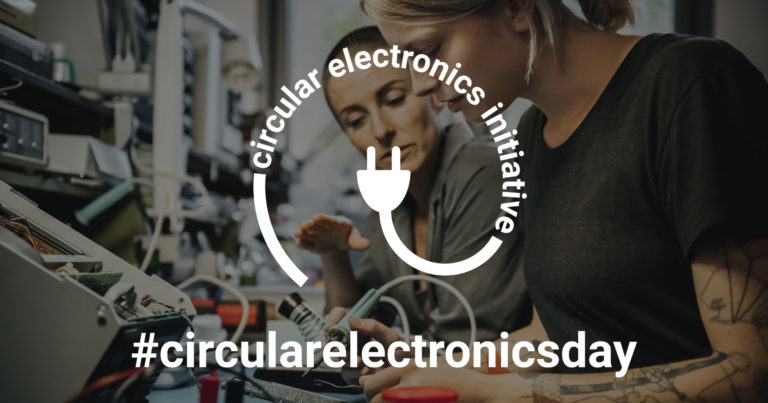Three ways to manage IT products in a circular way

In a linear economy, we use virgin natural resources to manufacture products, use them for a short period of time and then discard them. This leads to a number of serious sustainability issues where valuable natural resources are depleted, and toxic e-waste accumulates at a record speed every year. Adding to the problem, e-waste is often handled in unsafe ways, leading to human health problems.
In a circular economy, resources are handled in a more responsible way. For electronics, this means reducing virgin resource extraction, extending the use-life of products, and minimizing waste and pollution.
Circular Electronics Day (#circularelectronicsday) on January 24 is an important yearly reminder to make everyone aware that smart choices on what to buy and how to manage products throughout their life can make a big difference for the environment and human health, and can save you money.
Below is a list of three ways to manage your IT products in a circular way:
1. Extend the life of your IT products. Using products longer is the single most important thing to reduce the environmental footprint of your IT use. A single notebook computer generates around 300 kg of greenhouse gas emissions during its lifetime, of which almost 80 percent stem from the manufacturing phase. Upgrade and repair your products so they last longer and make use of the second hand/refurbish markets. If the vendor has a take-back scheme or if you are leasing the products, send the old products back so they can be handled responsibly.
2. Choose durable products. If you need a new (remember also considering the second hand market) product, choose durable products that can last longer. An easy way to do this is to look for products that carry a sustainability certification that includes robust criteria and requires independent verification. Consider climate compensate the e-waste footprint of your new product, either by recycling a product with a similar footprint or by purchasing the offsetting as a service.
3. Refurbish, remanufacture or recycle! Electronics contain valuable resources that can be reused or recycled. If it is not possible to reuse or sell your old products, send them to an extended producer responsibility scheme, an electronics recycler or a remanufacturer/refurbisher where they will be handled responsibly. Don´t let the products collect dust in your drawer or dispose them in the regular waste bin.
About Circular Electronics Initiative
The Circular Electronics Initiative aims to encourage organizations and consumers to take a more responsible approach to the electronic goods they use. The initiative drives communication activities, including Circular Electronics Day (#circularelectronicsday) that is highlighted every year on January 24. You can find more information about the initiative and participating organizations on the Circular Electronics Initiative website.

Släck kunskapstörsten med spännande läsning
Var bland de första att få reda på ny forskning inom områdena Cirkulär ekonomi, Tillämpad AI, Innovationsledning, Energi och Material. I vårt nyhetsbrev delar vi med oss av innovativa tekniker och projekt som gör märkbar skillnad för samhället. Du får också tips och inbjudningar till intressanta seminarier och event inom vårt område.


